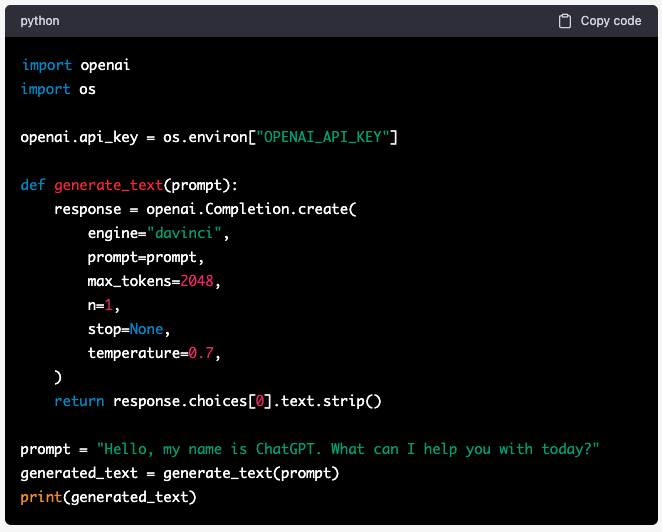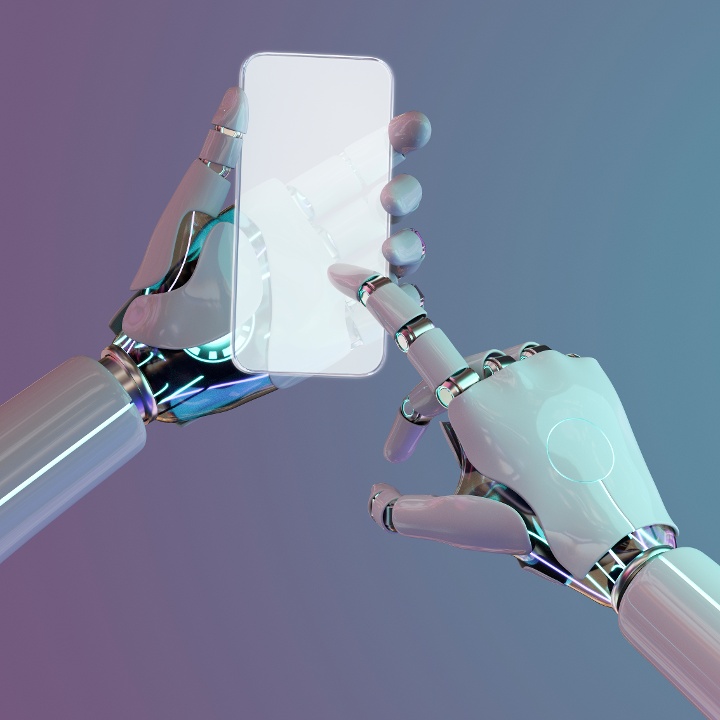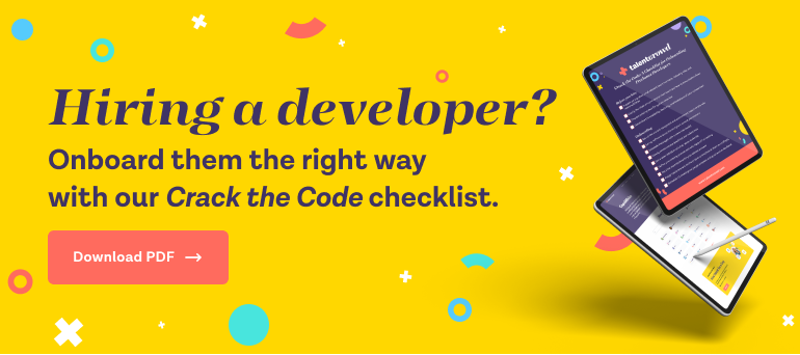As artificial intelligence (AI) technology advances, language models like ChatGPT have become powerful tools for natural language processing (NLP) and machine learning. With its ability to generate human-like responses to text prompts, ChatGPT is rapidly transforming how we interact with machines and can potentially revolutionize the development process.
Let's take a closer look at the technical capabilities of ChatGPT from a developer's perspective, exploring its potential uses, benefits, and limitations in the world of software development. Whether you're a new or experienced developer, this article will give you a deeper understanding of ChatGPT's potential and current limitations.
What is ChatGPT?
ChatGPT is an artificial intelligence (AI) language model developed by OpenAI, a research organization focused on advancing AI technology. The "GPT" in ChatGPT stands for "Generative Pre-trained Transformer," a reference to the model's architecture and training method. Specifically, the "transformer" architecture refers to the use of attention mechanisms in the model, which allows it to focus on different parts of the input text during training and generation.
ChatGPT is based on the GPT-3.5 architecture, an improved version of the widely popular GPT-3 language model. Like its predecessors, ChatGPT is designed to generate human-like text in response to user inputs, with the goal of creating more natural and engaging conversations between humans and machines.
In simple terms, ChatGPT is a highly intelligent AI chatbot developed by OpenAI to advance generative AI technologies. The model can understand natural language inputs and generate responses that are often contextually appropriate and coherent. This makes it a powerful tool for various applications, from customer service and support to language translation and content creation.
ChatGPT represents a significant step forward in developing conversational AI and demonstrates the potential for machine learning to enable more natural and engaging interactions between humans and machines.
Who is OpenAI?
OpenAI is a research organization and AI company founded in 2015 by a group of technology luminaries, including Elon Musk, Sam Altman, and Greg Brockman. The organization aims to create "friendly" artificial intelligence that benefits humanity.
One of OpenAI's most notable achievements is the development of the GPT (Generative Pretrained Transformer) series of models, including ChatGPT. These models are based on deep learning and NLP techniques, and they are designed to generate human-like text based on a given input prompt.
OpenAI's intention with ChatGPT is to provide a powerful and flexible tool for language processing that can be used in various applications. The organization has made the model available to developers and researchers via an API to encourage innovation and experimentation.
However, OpenAI has also been clear that they know the potential risks associated with AI, including the possibility of systems being used maliciously. To that end, the organization has implemented various safety measures, such as withholding certain features of ChatGPT and limiting access to the API.
OpenAI's intentions with ChatGPT are focused on advancing the field of AI responsibly and beneficially while recognizing the potential risks involved.
History of ChatGPT
The development of ChatGPT began in 2019, building on the success of OpenAI's previous GPT language models. GPT-1 was released in 2018 and demonstrated the ability to generate coherent and human-like text. GPT -2, released in 2019, further improved this capability and introduced the concept of "unsupervised learning," meaning the model was trained on a large dataset without human supervision.
ChatGPT was officially launched in June 2020 and marked a significant milestone in the development of conversational AI. The model was trained on a dataset of over 8 million text documents, including books, articles, and websites, allowing it to generate responses to user inputs that are often coherent and contextually appropriate.
The GPT series of language models have been used in various applications beyond chatbots, question-answering systems, and language translation tools, including text summarization and content generation for marketing and advertising.
In early 2023, Microsoft announced a $1 billion investment in OpenAI, reflecting the growing importance of AI technologies and the potential for ChatGPT and other OpenAI models to play a significant role in the future of artificial intelligence. The partnership between OpenAI and Microsoft has already resulted in joint projects and collaborations, and we will likely see continued investment and innovation in the years to come.
How to use ChatGPT
To use ChatGPT for yourself, just go to chat.openai.com and generate human-like text responses to given prompts. Developers can integrate ChatGPT into their applications using APIs provided by OpenAI. These APIs allow developers to create conversational agents, chatbots, and other AI-powered applications that can understand natural language and generate appropriate responses.
What is ChatGPT used for?
ChatGPT has many applications, including chatbots, language translation, question-answering systems, and content generation. ChatGPT's NLP capabilities make it an ideal tool for sentiment analysis, topic modeling, and summarization tasks. Additionally, its text generation abilities make it worthwhile for content creation, such as writing product descriptions, social media posts, and marketing copy.
While ChatGPT's limitations are still very present, its AI-written text can create an excellent blog post or email template. Even its limited knowledge of some subjects can far exceed that of its human user.
Thanks to the investment from Microsoft, OpenAI is now also helping to power the Bing search engine and Bing Chat. ChatGPT responds as a search engine would in Bing Chat, but in a conversational manner, demonstrating the next step for the artificial intelligence chatbot.
Impact on jobs
The impact of ChatGPT on jobs has received a mixed response. On the positive side, ChatGPT can automate repetitive and mundane tasks, freeing up time for developers to focus on more creative and strategic work. Additionally, ChatGPT can enhance the productivity and efficiency of remote teams, making it easier to collaborate across time zones and geographies.
However, the rise of ChatGPT also raises concerns about job displacement. As ChatGPT and other AI technologies become more advanced, they have the potential to automate many jobs that humans previously performed. This could lead to a significant shift in the job market, with some jobs becoming obsolete while new ones requiring different skills emerge.
ChatGPT is a powerful tool that has the potential to revolutionize the way we interact with machines and perform various tasks. While its impact on jobs may be both positive and negative, it is clear that AI technology is rapidly transforming the way we work and live. Developers need to stay informed and adaptable to keep pace with these changes.
Machine learning and natural language processing in ChatGPT
Machine learning (ML) and Natural Language Processing (NLP) are two critical components of ChatGPT's architecture. Machine learning is a subset of AI that involves training models to recognize patterns in data and make predictions based on those patterns. On the other hand, NLP is a branch of AI that focuses on enabling machines to understand and interpret human language through large language models and massive data sets.
ChatGPT uses machine learning and NLP in several ways to perform tasks. First, it uses machine learning to train its language model on massive amounts of text data. This allows it to understand natural language patterns and the context in which words are used. Additionally, ChatGPT's transformer-based models enable it to consider the entire context of a piece of text rather than just individual words or phrases.
ChatGPT also uses NLP techniques to understand and interpret human language. It can identify the sentiment of a piece of text, extract keywords and topics, and generate appropriate responses to user queries.
ChatGPT leverages its machine learning and NLP capabilities to perform various tasks, from generating text to answering questions to translating languages. Its ability to generate natural-sounding text makes it ideal for creating chatbots and conversational agents that can interact with users in a more human-like manner.
Machine learning and NLP are critical components of ChatGPT's architecture, enabling it to understand and interpret human language and generate natural-sounding responses. By leveraging these technologies alongside AI, ChatGPT can perform various tasks that were previously impossible or time-consuming, making it an invaluable tool for developers and businesses alike.
More than an AI chatbot: the future of ChatGPT
ChatGPT has already made significant strides in AI, but its potential for the future is even more exciting. As it continues to evolve and improve, it is likely to become a key player in the development of future AI platforms.
One area in which ChatGPT is already leading the way is in its use of transformer-based models. These models allow it to understand and interpret the context of language in a previously impossible way, opening up new possibilities for NLP and other AI applications.
ChatGPT will likely find new use cases in various industries as it continues to improve. For example, it could analyze customer feedback and sentiment in real-time, providing businesses with valuable insights into customers' preferences and needs. It could also be used to develop more sophisticated chatbots and conversational agents that can provide personalized support to users.
The impact of ChatGPT on jobs is also likely to be significant. While it will undoubtedly create new jobs in fields such as AI development and data analysis, it may also lead to the automation of some tasks currently performed by humans. This could impact jobs in areas such as customer service, content creation, and translation.
ChatGPT's impact on our decision-making is likely to be significant. As it becomes more sophisticated and accurate, it could be used to analyze vast amounts of data and provide previously impossible insights. This could help businesses make more informed decisions and individuals make better choices in their personal lives.
While ChatGPT is currently free to use, it remains to be seen whether this will change. However, as its capabilities grow, more advanced features may be offered as a paid subscription model. There will likely be a ChatGPT free and a paid version that will allow you to unlock new features and more generative ai tools.
While ChatGPT is leading the way, it's also important to watch for other AI companies looking to become a ChatGPT competitors, such as Google's new AI chatbot, Bard.
The future of ChatGPT is bright, and its impact on the world of AI is likely to be significant. Its use of transformer-based models and other advanced technologies is paving the way for future AI platforms that will be even more powerful and versatile.
Using ChatGPT for development
ChatGPT has a lot of potential for developers, and there are already several ways in which it could make their work more accessible and more efficient. One area where ChatGPT has shown promise is in its ability to generate code.
While ChatGPT was not explicitly designed for coding, it can write simple programs and scripts. This is done by providing the model with a prompt that describes the desired output, such as a function that calculates the sum of two numbers and lets it generate the code.
Of course, the quality of the generated code depends on the prompt and the complexity of the task. Simple tasks, such as generating basic HTML or CSS code, can be performed relatively quickly. However, more complex tasks, such as building an entire web application from scratch, are beyond the capabilities of ChatGPT.
Nevertheless, even this limited functionality can be helpful for developers. For example, it can help automate specific routine tasks and save time. It can also generate code templates or suggest possible solutions to coding problems.
Another way in which ChatGPT can be helpful for developers is in its ability to assist with language processing tasks. For example, it can extract information from text, such as identifying named entities or performing sentiment analysis. This can be useful in various applications, from chatbots to data analysis.
Finally, ChatGPT can have a significant impact on business, especially when it comes to development. Automating specific tasks and improving efficiency can help companies save time and money. It can also improve the accuracy and quality of customer service by providing personalized support and recommendations based on NLP.
While ChatGPT's abilities when it comes to coding are limited, it has a lot of potential to be useful for developers. Its ability to generate code and assist with NLP tasks can automate routine tasks and save time. As ChatGPT's answers continue to evolve and improve, it will become even more helpful for developers in the future.
Harnessing ChatGPT and generative AI for your next project
If you want to use ChatGPT to power your programs, its API is the easiest way to do so. OpenAI provides an API allowing developers to integrate ChatGPT into their applications and services.
To use the API, you must first create an account on the OpenAI website and obtain an API key. Once you have an API key, you can start making requests to the API using standard HTTP requests. The API supports several different endpoints, each with its parameters and options.
One of the most commonly used endpoints is the "completions" endpoint, which allows you to generate text based on a given prompt. To use this endpoint, request the API with the prompt as the input, and ChatGPT will generate a response.
For example, here's a sample Python code that you might use to get the OpenAI API to generate text:

This code uses the OpenAI API to generate text based on the prompt "Hello, my name is ChatGPT. What can I help you with today?" The generated text will be printed to the console.
In addition to generating text, the ChatGPT API can be used for tasks such as question-answering, summarization, and translation. The exact details of how to use the API for these tasks depend on the specific endpoint being used, but the basic process is the same.
Here’s a sample of the uses you might find for Chat GPT and its API:
- Chatbots and virtual assistants: You can use ChatGPT to power the NLP capabilities of chatbots and virtual assistants, allowing users to have more natural and human-like conversations with them.
- Content generation: ChatGPT can generate content for websites, blogs, and other online platforms. For example, you could use ChatGPT to create product descriptions, social media posts, or even entire articles.
- Customer support: ChatGPT can help automate customer support by allowing customers to ask questions in natural language and receive helpful responses.
- Language translation: ChatGPT can translate text from one language to another, allowing you to efficiently create multilingual applications and services.
- Question answering: ChatGPT can answer questions based on text input, such as a Wikipedia article or customer reviews.
To access the OpenAI API, you must sign up for an OpenAI API key with an OpenAI account on their website. Once you have an API key, you can authenticate your requests to the OpenAI API and gain access to the various language models, including ChatGPT.
To use the API, you can make requests over HTTP to OpenAI's servers, passing in your API key and the text input you want to generate a response for. The response from the API will be the generated text output.
It's important to note that access to the OpenAI API may be limited and subject to certain usage restrictions, depending on your specific use case and the traffic you generate. OpenAI may also charge fees for using the API beyond certain usage limits.
If you want to use ChatGPT to power your programs, the best way to do so is through the OpenAI API. By integrating ChatGPT into your applications and services, you can take advantage of its powerful NLP capabilities and improve the user experience of your software.
Public concern
There are, of course, some public concerns over the seemingly sudden rise of ChatGPT and other forms of artificial intelligence chatbots.
- Job displacement: Many people worry that AI will replace human workers in a wide range of industries as it becomes more capable.
- Bias and discrimination: There is concern that AI systems may perpetuate or even amplify existing prejudices and discrimination in society, particularly in areas like hiring and lending.
- Privacy and security: As AI systems collect and analyze large amounts of data, there is concern about how that data is used and who has access to it.
- Safety and security risks: There is concern about the potential for an AI system to be used maliciously by hackers or state actors.
OpenAI has taken several steps to address these concerns with ChatGPT and other AI chatbots.
- Addressing job displacement: OpenAI has emphasized the importance of creating AI chatbots and systems that work alongside humans rather than replacing them entirely. The organization has also advocated for policies that support workers who may be impacted by AI-driven job displacement.
- Reducing bias and discrimination: OpenAI has tried to train its systems on diverse datasets and build transparency and accountability into its models to reduce the potential for prejudice and discrimination.
- Protecting privacy and security: OpenAI has implemented strict security protocols and data access controls to protect user data. The organization has also been vocal in advocating for policies that protect privacy and limit AI systems' use of personal data.
- Addressing safety risks: OpenAI has implemented measures to prevent its models from being used maliciously, such as withholding certain features of ChatGPT and limiting access to the API. The organization has also been actively advocating for policies that promote AI's safe and responsible development.
Even with its impressive capabilities, ChatGPT has its limitations. One major challenge with language models like ChatGPT is that they are only as good as their training data. The model may produce nonsensical answers or exhibit other errors if the training data is biased or incomplete. To overcome this challenge, OpenAI has employed human AI trainers who provide human feedback to the model and help to refine its output.
Additionally, ChatGPT's reward model is designed to encourage the generation of plausible-sounding responses rather than perfectly accurate ones. This means the model may occasionally generate inaccurate answers but still need to be more plausible based on the available information.
Despite these limitations, ChatGPT is being used by many businesses and organizations to power chatbots, question-answering systems, and other applications. With its advanced language processing capabilities and ability to learn from human feedback, ChatGPT is poised to continue making an impact in the field of AI.
ChatGPT and Talentcrowd
ChatGPT is a powerful tool with a wide range of potential applications. From NLP to code generation, ChatGPT has already demonstrated its ability to perform various tasks with remarkable accuracy and speed. As it evolves, we will discover more ways to leverage its capabilities to improve our lives and businesses.
At Talentcrowd, we recognize the enormous potential of ChatGPT and are committed to being on the leading edge of its implementation. Our developers are dedicated to exploring the latest AI and machine learning advances. ChatGPT will be an essential part of our toolkit going forward.
As we continue to match high-quality remote developers with great places to work, we look forward to incorporating ChatGPT into our work processes and helping our clients take advantage of its capabilities. With the help of ChatGPT and other cutting-edge technologies, we are confident that we can help our clients stay ahead of the curve and achieve their goals in the fast-paced and rapidly-evolving world of technology.


-1.jpg?width=352&name=web-developer-working-in-home-office-2022-04-04-22-59-10-utc%20(1)-1.jpg)

